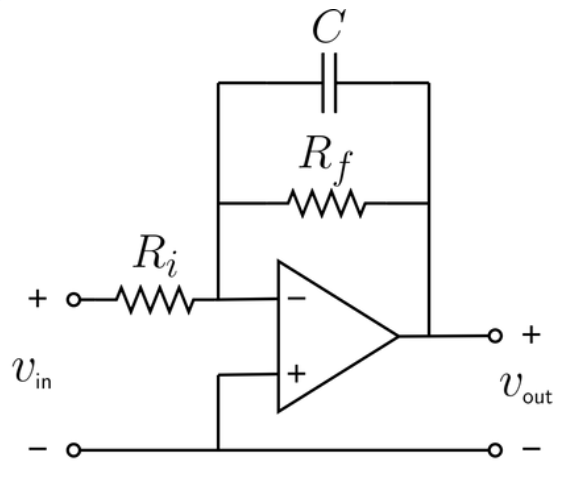 Home
Home
 Back
Back

Definition: This calculator computes the cutoff frequency (\( f_c \)) and gain (\( G \)) for an inverting op-amp low-pass filter, a circuit that allows low-frequency signals to pass while attenuating high-frequency signals and inverting the output signal.
Purpose: It is used in electrical engineering to design inverting op-amp low-pass filters for applications like audio processing, signal conditioning, and amplification, where high-frequency signals need to be filtered out and the output signal needs to be inverted.
The calculator uses the following formulas:
Where:
Steps:
Calculating the parameters of an inverting op-amp low-pass filter is crucial for:
Example 1: Calculate the cutoff frequency and gain for an inverting op-amp low-pass filter with \( R_f = 10 \, \text{kΩ} \), \( R_i = 2 \, \text{kΩ} \), and \( C = 0.1 \, \text{µF} \):
Example 2 (Demonstrating Scientific Notation): Calculate the cutoff frequency and gain for an inverting op-amp low-pass filter with \( R_f = 1 \, \text{MΩ} \), \( R_i = 1 \, \text{kΩ} \), and \( C = 1 \, \text{pF} \):
Q: What is an inverting op-amp low-pass filter?
A: An inverting op-amp low-pass filter is an active filter circuit that uses an operational amplifier (op-amp) in an inverting configuration, along with a resistor and capacitor, to allow low-frequency signals to pass while attenuating high-frequency signals and inverting the output signal.
Q: Why is the cutoff frequency important?
A: The cutoff frequency (\( f_c \)) determines the point at which the filter starts to attenuate high-frequency signals. It is critical for ensuring the filter performs as intended in applications where high-frequency noise needs to be removed.
Q: Why is the gain negative in an inverting op-amp filter?
A: The negative gain indicates that the output signal is inverted (180° phase shift) relative to the input signal, which is a characteristic of the inverting op-amp configuration. This phase inversion can be useful in certain applications but may require additional consideration if phase alignment is critical.